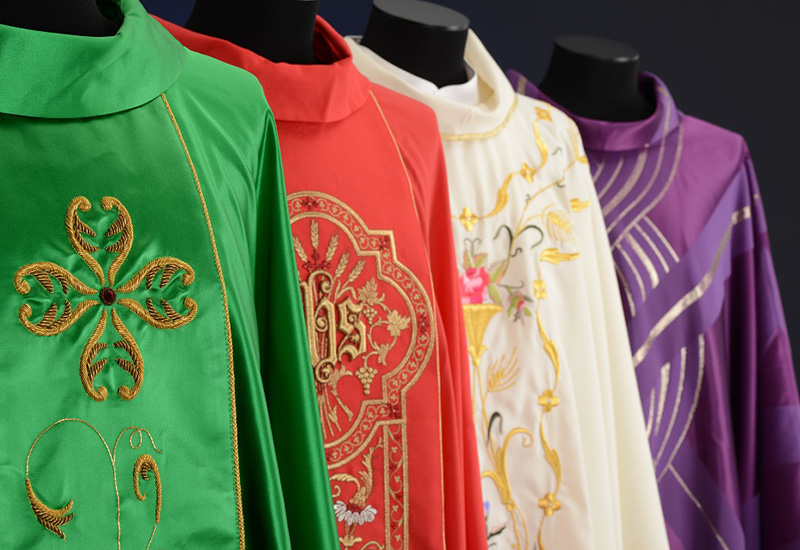This summer, I will be mostly wearing… green!
Perhaps you have wondered why, when you go to a church service, from a communion service on a Sunday, to a funeral, baptism, or wedding, the priest is wearing a different colour stole (the scarf that priests wear) or chasuble (the vestment worn over the body – like an ‘apron’ I guess!) or that the altar has a different colour?
Well, within the church, each colour holds deep symbolism, reflecting different aspects of the liturgical seasons and events. We have emerged from Easter (white) and have had Pentecost (red), and we are now in what we call ‘Ordinary Time’ – green.
White is associated with the major feast days and seasons of celebration, such as Christmas and Easter. It symbolises joy, resurrection, and the triumph of Christ over sin and death. White vestments and altar cloths are used to evoke a sense of purity and to emphasise the holiness of these special occasions. We also wear white for baptisms and weddings.
The colour purple is primarily used during the seasons of Advent and Lent, as well as on some lesser penitential occasions. It signifies penance, preparation, and a time of self-reflection. Purple reminds the faithful of the need for repentance and spiritual discipline as they prepare to welcome Christ into their lives during Advent or commemorate His sacrifice during Lent. It is also worn by the priest at funerals (if you ever watch Father Brown on television, he seems to carry a purple stole around in his pocket for emergency use – which of course, he gets to use quite a bit in that series).
Red, the colour of fire and blood, represents the Holy Spirit and the martyrs. It is prominently displayed on Pentecost, symbolising the descent of the Holy Spirit upon the apostles. Red is also used on days that commemorate the martyrs who sacrificed their lives for the sake of the Gospel. It serves as a vivid reminder of the courage and sacrifice that many have had to undertake to be part of this faith over the years.
Green represents the growth and vitality and is used during Ordinary Time, which encompasses the majority of the liturgical year. It symbolises hope, life, and the ongoing journey of faith. Green reflects the continuous spiritual growth and discipleship of the faithful as they follow Christ in their everyday lives.
The colour rose is used only on the third Sunday of Advent (Gaudete Sunday) and the fourth Sunday of Lent (Laetare Sunday). It offers a brief respite from the penitential themes and signifies a time of joy and rejoicing in the midst of the respective seasons.
The Anglican community of St Vincent’s don’t actually have rose vestments, but our Catholic sisters and brothers do, and they always kindly offer to allow us to use them on those days.
The liturgical colours of the Church of England enrich the worship experience by providing a visual representation of the theological significance of various seasons and feasts. Each colour holds symbolic meaning that helps people to engage with the season that the church is currently in.
By incorporating these colours into worship, the Church of England creates a multi-sensory experience that deepens the spiritual journey of its members and draws them closer to God.
My next wardrobe change will be in November!
God bless us all
Fr Rob













